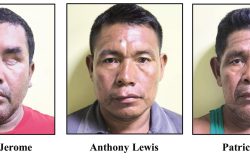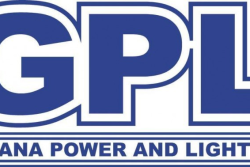The Government of Guyana is still in the process of putting measures in place for the highly anticipated auctioning of available offshore blocks, consequently the auction would not be likely before the end of the third quarter of 2022.
However, Vickram Bharrat, Minister of Natural Resources, gave assurances that the planned auction will definitely happen before the end of the year.
In what is now the first announcement of its kind by the government, on Friday Bharrat told Stabroek News, “It will not be in September…we are looking at before the end of the year.” Bharrat had been asked a number of questions on the modalities of the planned auction and said they [the questions asked] cannot be answered as details were still being finalized. It remains unclear how many offshore areas are due to be relinquished and returned to Guyana by oil companies but areas in the Kanuku, Corentyne, Demerara, Canje and the Kaieteur Blocks are expected to be up for auction.
The total areas to be auctioned also have not been made public. On the availability of remaining blocks, Guyana Geology and Mines Commission (GGMC) Commissioner, Newell Dennison, had in 2018, told this newspaper that from rough determinations, approximately 9,500 sq. km is available within the coastal environment, 24,000 sq. km within the environment of the continental shelf, 10,000 sq. km within the deep water environment and 9,000 sq. km within the ultra-deep water environment. Most interest has been on the offshore area and particularly in the deep water environment following major discoveries there by ExxonMobil in 2015, putting the highly coveted Block C as the most sought after area.
On his recent visit to the United States, President Irfaan Ali urged American companies to tap into the opportunity and not miss the bid. He had told Reuters that this country expects the auction to attract new companies to its energy industry. And while it was reported by the Financial Post that government was weighing its options on including ExxonMobil in the bidding process, the President clarified that this was not the case. “We are hoping that the participants in the auction… will add diversification… there is no blockage against any company,” he told Reuters.
According to a February 2020 updated GGMC map, most of the areas are already contracted out to companies, hence there are not many areas left. The companies that have blocks in the deep water area, are: Repsol and Tullow Oil (the Kanuku Block); Tullow (the Orinduik Block); Anadarko (the Roraima Block); Ratio Oil (the Kaieteur Block); Esso, CNOOC Nexen and Hess (the Stabroek Block); Esso, Mid Atlantic and JHI (the Canje Block); CGX (the Demerara and Corentyne blocks); ON Energy; and Nabi.
An agreement was entered into with ExxonMobil for continued works on scheduled relinquished areas in the Stabroek Block and the then APNU+AFC government had, in 2019, announced that the company had relinquished 20% of the Canje Block area. No areas in the coveted Stabroek Block will be up for grabs if the auction is held this year, as Stabroek Block areas only become available in 2026. This newspaper understands that the COVID-19 pandemic induced delays which had slowed ExxonMobil’s operations, hence the company subsequently wrote to the government seeking to regain operational times lost.
Vice President Bharrat Jagdeo, who holds oversight for the energy sector, said that while a decision was made on auctioning future blocks, the crucial decision is if to go to auction with or without seismic data. “We would have to go through an open process to ensure future blocks are auctioned.” “Do we auction with or without seismic data?” was the question he sought to have answered.









